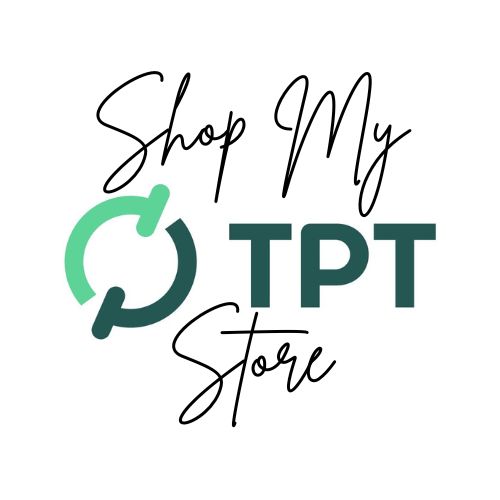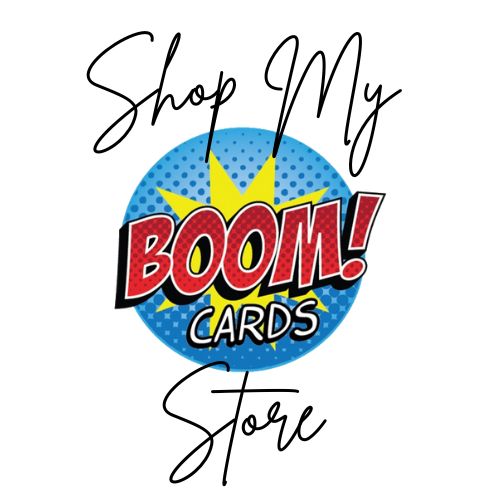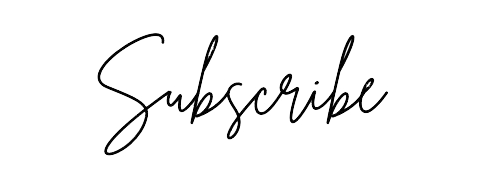New special ed teachers or speech/language therapist who mostly works with students in general ed classes will love these tips! Sometimes these positions are called Resource, inclusion or Full Inclusion, Pull-out or Push-in, SLP or even RSP (Resource Specialist Program in Calif). Do you feel like you’re going in circles trying to plan for the school year? Or are you trying to keep your head above water in order to make it to the end of the year?
Here are 5 time saving tips to help you save time and work more productively during the school year:
1. Daily or Weekly Schedule for You and Any Staff.
I have to admit, I think getting the initial schedule together is probably the hardest part of back to school for special ed teachers. First, you have to find out what service delivery method you will be using. You will also need to find out daily schedules from the teachers of your students…sometimes the whole grade teaches subjects at the same time. I get out a bunch of sticky notes and for each student on my caseload, I write their name, room #, grade and goals (abbreviate as much as possible). Since my students have goals focused on reaching standards, typical areas are reading decoding, reading comprehension, writing, math calculation, math reasoning, and attention.
Depending on whether you will be serving your students via full-inclusion, co-teaching, pull-out, etc. will depend on how to keep making the schedule.
If you and/or your paras are going out to all classes, then you can make your schedule with this information. Remember to consider when grade levels to go to recess and lunch, and when you and your paras have breaks or other duties (transportation, yard duty, toileting, feeding, etc.) Put each of those things on a separate sticky note (a different color even). Either on a whiteboard, on poster board, or on a file folder you open up, make columns for each person who will be having a schedule. For now, just keep it as columns.
2. Communication/Collaboration with General Ed Teachers
Be a team member and work together to provide educational access, accommodations to help your shared students meet their goals. If you push-in, provide full inclusion services or co-teach, remember that you are still a guest in her class. Clean up after yourself, take the initiative to help her pass out supplies, set up stations, and don’t correct her if she makes grammar or factual errors (even the most seasoned teachers can get flustered when another teacher visits). Assist in making visual schedules, behavior systems for your students and help her implement them. If you make a mistake, own up right away, and apologize, don’t let perfection or competition stifle a new working relationship. Think about how you can be helpful and make her life easier.
General ed teachers will come to you for help and advice on topics such as students with chronic behavior issues. You will want to collect and have resources available which you can share with them, and help them implement if needed.
3. Paperwork
On top of grading work, testing and maybe homework, there is lots of IEP related paperwork. Think about how to keep track of all the papers such as data collection, assessments you are in the middle of, progress monitoring, getting meeting notices signed by parents, etc. Many districts/county offices of education provide IEP software to help develop IEPs and provide other resources such as caseload lists, data collection forms, progress reports, and more. Find out what your district provides. Instead of handwriting your own lists, you may only have to print something from the software. Also consider whether you will go paperless, saving forms on Google Drive, for example, or print resources so they are handy when the internet is down. Personally, I say both! I save everything on Google Drive (or you could use the cloud storage system of your choice) but I also print out masters of everything and gave extra copies on hand.
Don’t forget the IEP handouts for the meetings (parent rights, agenda, state insurance billing and more – including foreign languages). You also need to stay on top of IEP due dates – don’t just look at the annual dates, because the triennial dates don’t always line up with annual dates. If you look ahead you can often hold them together. Besides the mandatory parent, administrator and special ed teacher (you) you need to invite other specialists who might be on the student’s IEP team (i.e. APE, OT, VI, DHH, OI, PT, Autism, etc. See end of this post if you don’t know what the acronyms stand for).
4. Reporting Progress
Then, just as things start to settle, it is time for report cards, it will be time for IEP progress reports, and parent conferences. And, yes, the principal really wants to you attend parent conferences for each of the 25 students on your caseload from Transitional Kinder to sixth grade! (That happened to me my first year.) How do you do that? You will need to do more data collection and check for progress on goals, then update all the goals for each student (and collaborate with other IEP team members).
5. Customized Sticky Notes!!
Making these really save me time and they are more professional looking than my poor handwriting. Some are as simple as “Please sign and return” in Spanish to put on a note home. Others are more detailed such as a data collection sticky note that we use in class, or a check-off list of things I need to remember to do when preparing for initial assessments and IEPs. Make a template or master and then you can easily grab and go the next time you need one.
If you can relate to these situations and are looking for ideas and answers to be more organized, then you might want to check out my IEP Binder for Special Education – Resource/Inclusion Teachers. This is editable in MS PowerPoint or Google Slides (TM).
You will find 11 chapters filled with explanations, forms, and tools to help you stay organized with IEPs and all that goes into them, as well as communicate effectively with teachers and parents.
- Shock your principal when you ARE able to attend all those parent conferences.
- To have something up your sleeve to help that teacher who is out of ideas for solving a student behavior problem.
- To make a customized checkoff list that covers EVERYTHING you need to do before and after the IEP meeting.
- To have quick data collection and informal goal assessments that you tailor-make to the goals of your students.
- In addition, a whole system for keeping all IEP paperwork confidential, and having teachers sign off when they receive accommodations, etc.
- Binder covers, section dividers, and tabs are included to print and keep everything organized in binder(s) or in a filing cabinet.
Acronyms used in this blog post:
IEP: Individualized Education Plan (or Program)
APE: Adapted Physical Education
OT: Occupational Therapy
OI: Orthopedically Impaired or Orthopedic Impairment
VI: Visually Impaired or Vision Impairment
DHH: Deaf, Hard of Hearing
PT: Physical Therapy
This resource comes in an editable PowerPoint document. You will start with samples and partially filled templates (for examples) that you can edit any way that suits your situation. I also provide directions on how to make super cool customized sticky notes to save you time… I include editable templates, but once you try it, you’ll come up with bazillion other ways to use them! If you prefer to use Google Slides you can open the PPT file right in Google Slides!






[…] Five Time Saving Tips for New Special Ed Teachers […]